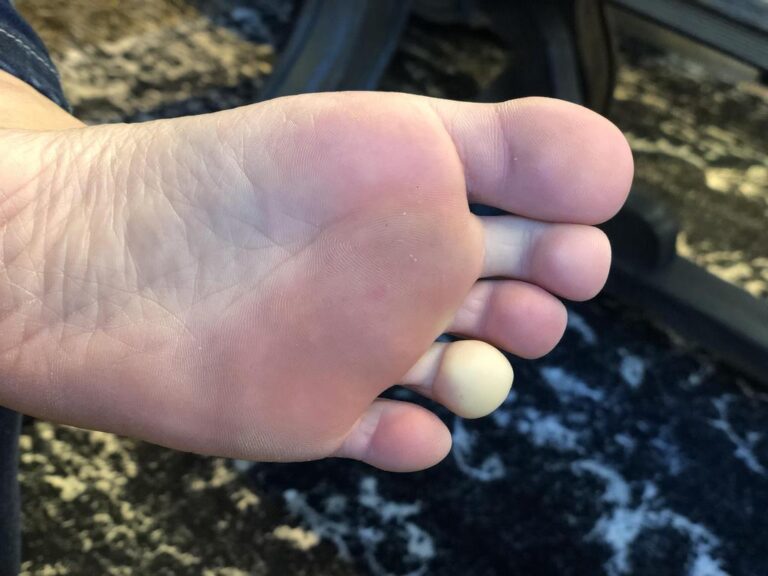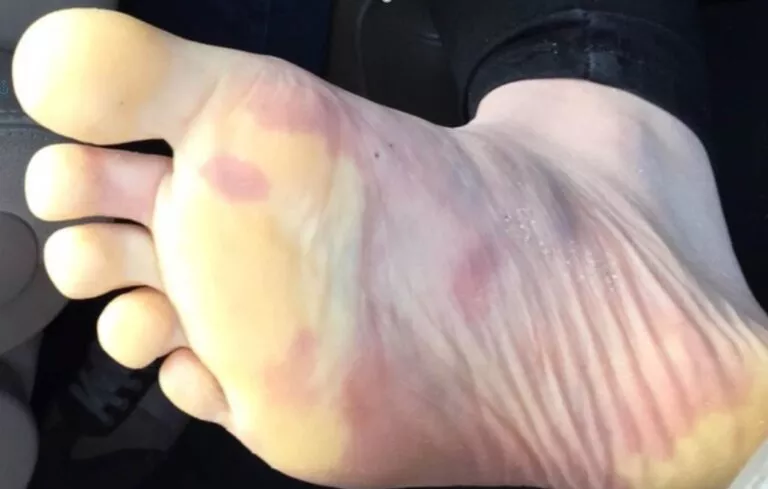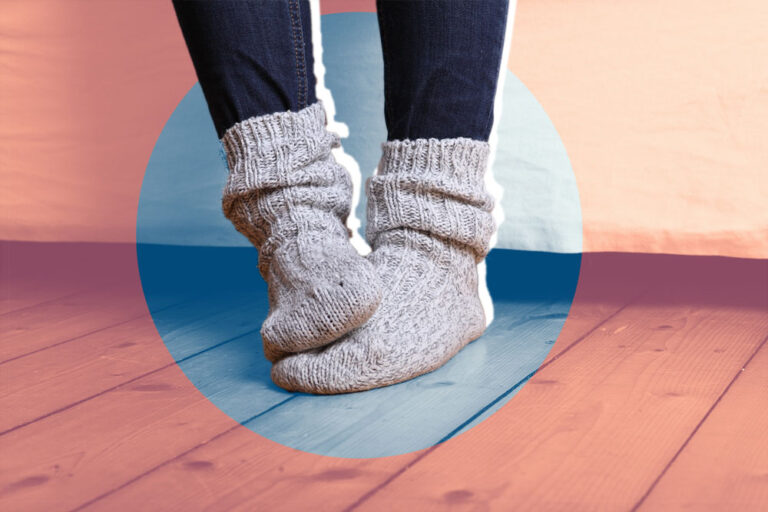RAYNAUD’S DISEASE AFFECTING FEET
Winters and cold feet are common causing numbness in your feet. But people suffering from Raynaud’s disease experience cold or numbness in their feet at any time of the year. Your feet quickly go from warm to freezing after cold exposure, during a sharp increase in physical activity or stressful situations, you may be suffering from Raynaud’s disease.
Raynaud’s disease or phenomenon causes the blood vessels to constrict restricting the blood flow to the extremities. These attacks are triggered by physical and emotional stress like plunging into cold water or walking long distances.
Raynaud’s disease leads to some areas of your body such as your fingers and toes to go numb and cold in response to cold temperatures or stress. During this disease the smaller arteries supplying blood to your skin become narrow, limiting blood flow to affected areas.
Women probably suffer more than men to have Raynaud’s disease. Also, this is more common in people who live in colder climates. For most people suffering from Raynaud’s disease isn’t disabling, but it can affect your quality of life.

CAUSE OF RAYNAUD’S DISEASE?
The reason behind Raynaud’s disease is not fully understood by the researchers. The color of the affected area changes and pain is due to a short-term reduction in blood supply.
Raynaud’s disease causes the blood supply to the fingers and toes to be controlled partly by nerves connected to the blood vessels. The nerves of the affected area reduce the blood supply in response to certain situations such as extremely cold temperatures. This is the body’s natural reaction, to prevent a loss of heat from the body.
People suffering from Raynaud’s phenomenon respond too much too cold temperatures and restrict the blood supply more quickly than normal. The blood vessels constrict, and less blood can flow through them.
Raynaud’s disease is characterized as primary and secondary, such as:
- Primary Raynaud’s or Raynaud’s disease: This is caused without any other illness behind it with usually mild symptoms. The primary Raynaud’s disease can be very uncomfortable, but it’s not frequently severe.
- Secondary Raynaud’s or Raynaud’s syndrome: This is a result of another illness, usually a condition that attacks your body’s connective tissues, such as lupus or rheumatoid arthritis. This is not a common condition that might cause serious health problems like skin sores and gangrene. These happen when cells and tissue in your affected area die from a lack of blood.
 Raynaud’s disease can also be caused by emotional changes, such as feeling worried as they might trigger the nerves to shut down the blood supply.
Raynaud’s disease can also be caused by emotional changes, such as feeling worried as they might trigger the nerves to shut down the blood supply.
Raynaud’s phenomenon can result from using vibrating machinery including pneumatic drills, hammer drills, hedge cutters, and other power tools. This is also known as hand-arm vibration syndrome or vibration white finger.
It may also develop as a side effect of some drugs like beta-blockers used in the treatment of high blood pressure and angina.
Raynaud’s phenomenon might improve with time, but most people with Raynaud’s phenomenon will always have the condition. If Raynaud’s syndrome is caused by some underlying medical reason, then it’s sometimes possible to remove or treat this.
SYMPTOMS OF RAYNAUD’S DISEASE OF FEET
Raynaud’s syndrome can affect either the hands or feet or both. The attack can be reduced or prevented by warming the hands and feet at once usually by massaging them.
The common signs and symptoms of Raynaud’s disease include:
- Cold fingers or toes.
- Color changes of the skin in response to cold or stress.
- Numb, prickly feeling.
- Stinging pain upon warming or stress relief.

During a Raynaud’s attack, the affected areas of your skin first turn white, further leading to a blue color with feeling cold and numb. But, as you warm up and your circulation improves, the affected areas may turn red, throb, tingle, or swell.
Raynaud’s most commonly affects your fingers and toes. But it can also affect other areas of your body, such as your nose, lips, ears, and even nipples.
DIAGNOSING RAYNAUD’S DISEASE OF FEET
The physician will check for the symptoms, diet, habits, and hobbies. The doctor would get the capillaroscopy to differentiate between secondary and primary Raynaud’s. This would involve observing the skin at the base of the fingernail and examining it under a microscope to assess for malformed or enlarged capillaries.
The doctor may suggest a blood test may be done to look for antinuclear antibodies or to measure erythrocyte sedimentation rate, which may indicate autoimmune problems or another inflammatory process.
TREATMENT OF RAYNAUD’S DISEASE OF THE FEET
Treatment goals of Raynaud’s disease include preventing attacks or limiting them when they do happen. You need to keep your hands and feet warm and dry, control stress, and do regular exercise
Medication: The doctor would recommend you to avoid some drugs, such as over-the-counter cold medicines containing pseudoephedrine. They would worsen the symptoms by causing your blood vessels to narrow.
In case of secondary Raynaud’s syndrome, your doctor might prescribe medicines to control your blood pressure and relax your blood vessels. You might sometimes get sores on the skin, so the doctor might need to apply a cream containing any one of these drugs. They include:
- Calcium channel blockers: Such as nifedipine (Afeditab CR, Procardia), amlodipine (Norvasc), felodipine, and isradipine.
- Vasodilators: This cream would include the high blood pressure drug-like losartan, the erectile dysfunction medication like sildenafil, the antidepressant-like fluoxetine, and a class of medications known as prostaglandins. Other creams may include nitroglycerin to help heal sores.
- Surgery: If the condition of the affected area doesn’t improve after medications or creams as well as you’re at risk of severe problems, such as losing parts of your toes or fingers, the doctor might consider surgery. Surgery would involve removing the nerves to the blood vessels in your skin to limit how much they open and close. The doctor might also inject drugs into your hands or feet to block those nerves.
To reduce the risk of an attack, it can help to keep the feet and hands warm, avoid smoking, and get enough exercise.

OUTLOOK
Raynaud’s disease is a rare disorder of the blood vessels affecting your fingers and toes. The blood vessels of the affected fingers or toes become narrow when you are cold or feeling stressed. Due to this, the blood can’t reach the surface of the skin and the affected areas turn white and blue. When the blood flow returns, the skin turns red and throbs or tingles. In severe cases, loss of blood flow can result in sores or tissue death. It’s vital to keep your core temperature warm, as well as your hands and feet in particular.
If you or anyone you know is suffering from foot problems, our expert providers at Specialty Care Clinics will take care of your health and help you recover.
Call us on (469) 545-9983 to book an appointment with our specialists.
